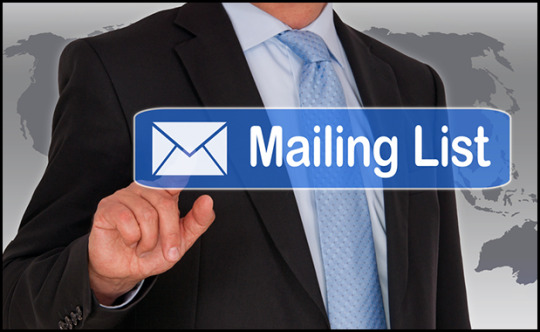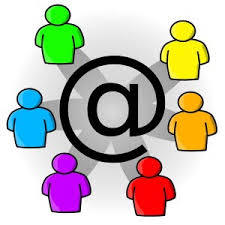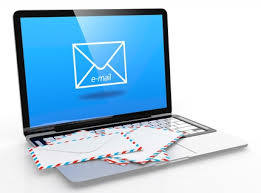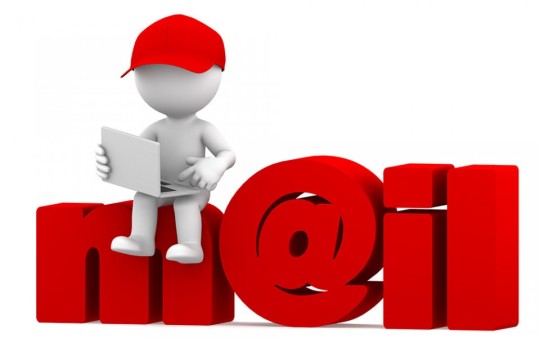Photo

(via The 4 L's of a Successful Lead Generation Strategy)
0 notes
Photo

(via 5 Reasons Why Email List Hygiene Is a Serious Marketing Priority)
0 notes
Photo

(via Email List Management Tips for Every Sender)
0 notes
Photo

(via Email List Management: What are the Best Ways to Handle Bad Addresses & Unsubscribers?)
0 notes
Text
5 Best Practices for Email Marketing List Management
Properly managing and maintaining your contact lists is a critical, yet often overlooked, component of effective email marketing. Once you’ve grown an organic list of quality contacts, you’ll want to manage it to ensure the integrity of the list moving forward.

List maintenance has become a necessary best practice for email marketing success. Hard bounces, soft bounces and unengaged subscribers can have a negative impact on email deliverability, plus they negatively affect the your email marketing KPIs. So here are 5 best practices for managing and maintaining your email marketing lists.
1. Send a welcome email to new subscribers
Proper list maintenance starts with the initial subscription. One best practice is to set up a triggered response email that sends all new subscribers a “welcome email,” thanking them for subscribing and requesting that they add your email address to their approved senders list in case your initial email lands in their junk folder.
It’s also a good idea to remind them of what they should expect out of their subscription as far as frequency and cadence, content, etc. You’ll also want to let them know how to get in touch if they have any issues, and make it clear how to adjust their preferences or opt-out altogether should they decide they no longer want to receive communication from your firm. (See #2 and #5)
2. Use subscription management
Research from Econsultancy found that 66% of email users list frequency of emails as a reason to unsubscribe. So don’t lose a contact permanently simply because they are tired of receiving a certain type of email or too many emails altogether! Subscription management allows contacts to manage their email preferences and customize the content they receive from you and/or manage the frequency of the emails they receive. It gives a contact the ability to “unsubscribe” from certain types of emails, or they can opt out altogether.
Subscription management will allow your firm to stay compliant with CANSPAM and potentially avoid losing a contact when the issue is volume or content, not the sender itself. The good news is that most reputable email service providers (ESPs) or marketing automation platforms have subscription management functionality built in—it just needs to be set up and enabled.
3. Perform proper list hygiene
You’re well aware of personal hygiene, but did you realize that your email lists need proper hygiene as well? In fact, while list hygiene is crucial to your ongoing email marketing success, this is one area where a lot of firms struggle. Statistics show that up to 25% of your email list will drop off each year. If you think about it, people change jobs all the time and email addresses change. Purging your list of old, invalid emails (or hard bounces to put it in ESP terms) is really important.
It’s a good idea to regularly remove all hard bounces and recurring soft bounces from your lists. Sending to invalid emails repeatedly will negatively impact your sender reputation, which will ultimately impact your ability to reach your contacts’ inbox. Consider a regularly scheduled purging (whether weekly, monthly, or after every major campaign) of these invalid emails to keep your lists clean and your sender score high.
4. Implement re-engagement campaigns and eliminate unengaged subscribers
Along those lines, unengaged subscribers are a major concern for proper list management. Unengaged subscribers are those contacts who still have a valid email address, are still subscribed to your list, but they haven’t opened and/or clicked one of your emails for quite some time. While they haven’t gone to the trouble of actually unsubscribing, they’ve emotionally unsubscribed and are simply ignoring and deleting your emails. What many marketers don’t realize is that unengaged subscribers not only hurt your sender reputation, but they’re also not helping your marketing cause since they’re not bothering to open your emails
But before purging unengaged subscribers from your lists, a best practice is to execute what’s known as a reengagement campaign. You’ll first want to identify any subscribers who haven’t opened and/or clicked one of your emails within the last 6-12 months. Then you’ll want to send those unengaged subscribers a targeted email acknowledging that they haven’t opened or clicked through in long time. Simply ask them if they want to continue to receive your emails and give them a chance to opt-in again. This provides you with both a chance to reengage an unengaged subscriber, as well as justify purging your lists of those who fail to click on the re-engagement campaign.
5. Make it easy to unsubscribe
The final best practice for list management might seem counterintuitive, especially considering we’ve discussed ways to keep from losing subscribers. But in addition to CANSPAM compliance, it’s important to make unsubscribing as easy for your contacts as subscribing was in the first place. In other words, don’t try to hide or bury the unsubscribe link at the bottom of your email. If at any point a contact no longer wishes to receive your emails, it’s much better in the long run to lose an uninterested contact, than to have them ignore your emails (see #4) or flag your emails as spam.
Quality over quantity
Remember that with email marketing lists, quality is always preferred over quantity. A big part of managing your lists is making sure that they remain quality lists, free of invalid contacts and unengaged and uninterested contacts. Growing your lists the right way—using permission-based, subscription tactics as opposed to purchasing or renting lists—is the starting point for a solid email marketing program. But it can’t stop there. Proper list management is essential for ensuring ongoing email marketing success.
#emailmarketinglists#list management#mailing list management#campaign management#List Management Service#lead generation#Data Cleaning Services#Data Cleansing and Data Migration
0 notes
Photo

(via THE 5 KEYS TO LIST GROWTH)
0 notes
Photo

(via Sloppy List Management Practices That Can Get Your Emails Blocked)
0 notes
Photo

(via Email List Management: Best Practices For Managing Bounces & Unsubscribes)
0 notes
Text
Email List Management Doesn’t Have to Be Hard
It allows you to get more finely-tuned messages into the hands of a more well-segmented audience. In short, it gets you to the point where you’re only sending emails that are relevant to the interests of that particular subscriber – the ideal message, for the right person, at the right time.
An integrated marketing automation and CRM can help with this, since your marketing automation solution will pull information about your customers from your CRM, and use it to build targeted lists.

Better targeting and segmentation enable you to build better relationships with your customers and prospects, who will come to trust and respect you more as they begin to feel you understand them better. You’ll start to see a higher ROI on all the emails you send, not to mention a decrease in unsubscribes and spam complaints.
There are a lot of ways to build your email list, but the most common is offering an incentive, such as a coupon or a piece of content, in exchange for the prospect’s name and email address. Permission-based marketing means that your prospects, leads, and clients have directly granted you (or your company) permission to market to them, and requesting a prospect’s email address and permission to market to them is the first step in ensuring your marketing is permission-based. In marketing terms, this means they have “opted-in” to your marketing list. Opt-ins come in a variety of formats: filling out a form on your website, filling out a form in person at your business, or having a conversation with a prospect in person or on the phone.
Permissions are critical: marketing to someone who has not opted-in can get you in trouble with your email marketing vendor, internet service provider, or jeopardize your compliance with anti-spam laws. Even if matters don’t escalate to that level, no one likes to receive emails they didn’t sign up for, and you don’t want to risk alienating a potential client.
Make Opting Out Easy
Another email list management best practice is to provide a means of unsubscribing from your list. This is required by law in some countries, but also helps prevent former subscribers from marking your email as spam. An “unsubscribe here” link should be provided in the footer of your emails, and most marketing automation vendors provide functionality to make it easy to add.
When you have multiple lists that you manage – such as your newsletter mailing list, new event announcements list, and loyalty perks list – a prospect may choose to remain on one list while unsubscribing from another. Subscription management offers a way for individuals to select which emails they’d like to receive by providing them a choice to opt-in to some lists and opt-out of others. Instead of a single “unsubscribe” link, the person is directed to a web page where they can select the lists they’d like to receive.
Purchased Marketing Lists
It may be tempting to purchase a list of email addresses from a third-party; however, many of these lists are not reliable, and the recipients on the list have not opted-in to receive your emails. Third-party lists are often purposely seeded by Internet Service Providers (ISPs) with fake email addresses whose only purpose is to catch spammers. Third-party lists also frequently contain out-of-date email addresses that will cause your bounce rate to go up. In fact, many email marketing automation providers don’t permit the use of third-party lists at all, whether purchased, rented, or borrowed.
Maintaining Active, Engaged Lists
As a business owner, few things are more frustrating than investing time and effort in a new program that doesn’t succeed. An example from the email marketing world is an email newsletter campaign that generates a high number of bounces or spam complaints, rather than the intended opens and click-throughs. Keeping “clean” lists – lists of active, engaged, opted-in subscribers – is a critical step towards successful email list management.
Follow these five steps to maintain a clean email list:
Build the List from Scratch
We’ve already shared the dangers of purchased lists, but it bears repeating: purchased lists are likely a waste of time and effort, with the potential for massive downsides, both practical (high unsubscribes and bounce rates with very low open rates) and legal (CAN-SPAM violations). Including only email addresses provided to you freely ensures the subscriber is interested in what your business has to offer. These subscribers are unlikely to provide invalid email addresses or to mark your messages as spam, since they have opted-in to receive your content.
Monitor Excluded Emails and Email Events
Every time you send an email to a list, be sure to take a look at the excluded emails and email events, particularly the bounce events. Excluded emails are email addresses that were not sent to due to excessive past bounces.
You should seriously consider removing these email addresses from your marketing list. If the email address has been excluded, the recipient did not get the email. It is good to periodically remove these people from your marketing list so the number of people you think will receive the email will be much closer to the number of people that actually receive the email.
Remove Fake, Invalid, and “Spam Trap” Email Addresses
Keeping up with the excluded emails and email events is a good way to catch fake or misspelled email addresses. “Spam trap” email addresses are valid email addresses that are created for the sole purpose of luring spam. While most of these email addresses end up on purchased third-party marketing lists (as an easy tool to catch senders of unsolicited emails), it is not unheard of for someone to submit a spam trap email address maliciously. Some examples of spam trap addresses include [email protected], [email protected], [email protected], etc.
While there isn’t a catchall for identifying these kinds of addresses, it’s always good to keep an eye out any time you look through your marketing lists. You can also delete email addresses that are obviously misspelled, such as [email protected] or [email protected].
Remove Role Accounts
While it may not seem like it, role accounts such as [email protected] often have a negative impact on email campaigns. These email addresses are often checked by multiple people and may change hands frequently. Even if collected legitimately, these types of email addresses are more likely to become a source of spam complaints. During your email list management process, you may want to consider removing these types of emails.
Prompt Customers to Update Information and Provide Subscription Options
Consider regularly prompting your customers to update their personal information and subscription preferences. If customers are aware that they have the option to stop receiving your messages and are consistently presented with the opportunity to provide a new email address, it is likely that each person on your marketing list has given you a current email address and is on that list because they have chosen to be. This can be as simple as including a link to a form or subscription management page in your marketing, or sending a quarterly or biannual email prompt to update information.
Email list management and maintaining a clean list is an ongoing process, but with the above steps you should be able to increase your delivery rate by weeding out harmful and unnecessary list members.
Advanced Email List Management
Beyond keeping the list clean from a data point of view, it’s also a good idea to periodically evaluate the quality of your list from a sales and marketing perspective.
While reviewing your marketing lists, ask these questions:
When was the Lead Created?
If the “created on” date is more than one year ago, and the lead hasn’t been converted, perhaps they should be disqualified. There’s also a good chance that the contact info for that person is out-of-date.
What was the Lead Source?
Evaluate your lead sources continually so you know what drives the best conversion rates. Dig into your CRM data, especially opportunities, and find out where your best leads are coming from. You might find that your best leads come through referrals, and your worst come through trade shows.
How Complete is Your Data?
This one is harder to analyze, but it can give you some good insight. If you’ve got old, cold leads that have only ever given you an email address, chances are they’re not as qualified as leads where you have a full name and phone number.
Re-Engaging Old or Cold Leads
After you’ve scrubbed your list, you may decide that some leads or contacts deserve one last chance. If you have good quality leads that have opted into your mailings in the past but have just gone cold, a good email list management tactics is to consider a re-engagement campaign. These are most effective when you use a little trial and error to refine your messaging. Try sending an email with a subject line like, “We haven’t heard from you in a while” or “We’d like to re-connect.” You could also try to regenerate interest through a promotion or discount.
What are your top tips for email list management? Let us know in the comments! If you want to learn more about how make email marketing more profitable for your small business, check out this eBook, Email Marketing that Works for Small Business.
Article From: blog.automational.com
0 notes
Text
Email List Management: What are the Best Ways to Handle Bad Addresses & Unsubscribers?
If you've got a large and active email list and have previously been emailing to them, even if you've only recently started, Comm100 explains in this article the best practices of email list management in order to optimize delivery and response rates.
Why is Email List Management Important?
In the constant struggle to get your email into your subscribers' inboxes, having bad addresses and not properly managing users who unsubscribe can quickly add up to a deliverability problem. Properly managing the non-viable emails on your email list from the very beginning, as well as throughout you email marketing campaign, can improve not only deliverability but also give you a more realistic view of your email marketing stats.

What Should My Email List Management Metrics Look Like?
The two metrics that you need to concern yourself with when evaluating the quality of email names on your list are the bounce rate and the unsubscribe rate.
Bounce Rate: The bounce rate is the number of email addresses (in percentage form) that you emailed to that were returned to your email server as undeliverable. This could be because the email addresses were mistyped when they were submitted, are deactivated email accounts (or accounts that never existed to begin with), or are email addresses where the user has not checked email in so long that the inbox is full to its maximum capacity. Your bounce rate should never be more than 20%, and that would be considered to be the high end of the scale. You would really prefer, on a house list, to see a bounce rate of less than 10%. Bounce rate is important in terms of making sure that you don't get flagged as spam because most spam filters will look to see how many bad email addresses an email was sent to. The more bad addresses you send to, the more the spam filters assume that you're using a bought, stolen or phished list, and the higher your spam score will be.
Unsubscribe Rate: The unsubscribe rate is the number of users (in percentage form) who unsubscribed from your email program when they received a particular email. If you are using an opt-in or double-opt-in house list, this should be no more than 3%, and 3% would be considered high. You are really looking for an unsubscribe rate of less than 1%. Beyond that, the message is that your users don't like your content and you should begin to revisit what you're including in your email.
How Do I Prevent High Bounce Rates?
Preventing high bounce rates is just as important as any other element of your email list management. As previously mentioned, high bounce rates can mean problems with your email getting flagged as spam. But there is also a cost factor. If you're sending email from a system that charges you by the weight of the email or the number of email addresses that you send to, every bad address that you continue to send to will cost you money and impact the ROI of your email campaign. There are three primary methods for controlling bounce rate.
Check for Email Validity at the Time of Sign-Up: Make sure that form on your website where users enter their email, whether that's during a purchase and registration process or on a newsletter sign-up field itself, is checking for proper email formatting. At a minimum, your email collection script should check for the format [email protected]. However, some scripts can get more detailed and look for common words like "test" or "fake" in the email to throw up warning flags. If you are using a double-opt-in system, you are protecting even further from bad email addresses ever actually being included on your list because the email address needs to actually be delivered to before the customer is ever actually added to the list.
Prune Your List Regularly: "Pruning" an email list means removing bad names, usually after they have been returned as undeliverable a pre-set number of times. Depending on how clean you want to make your list, you can set your pruning parameters to anything from 3 undeliverable emails to 10. Most third party email sending providers offer an automatic pruning option that you can control the number of returns on before a name is removed. If you're not using a system with an automatic pruning option, we strongly recommend having one of your developers create a script that tracks and removes undeliverable addresses.
Periodic Re-Opt-Ins: This measure in email list management is fairly extreme and can make your list too small and targeted, but if you're paying to send email by the number of addresses sent to, it may be a good option for you. Some email senders choose to periodically send an email once a year or so to everybody on their list who they can see has not clicked through, or opened, or subsequently purchased from an email send. Recipients are then asked to opt in back by clicking a link, and, if they don't, their email is removed from the list. The pro of this is that you are sure you are only paying to send email to very engaged users. The con is that you may remove names from your list of lapsed members who at some point would have, in fact, been receptive to your email offer.
How Do I Prevent High Unsub Rates?
Well, the truth of this is that the only way that you can prevent high unsub rates is to use opt-in list gathering and then provide exceptional email content that your users really want to receive. However, there are some other elements to managing your unsubs that you should keep in mind.
Keep Unsubbing Easy: There will certainly be marketers out there who tell you that you should make the unsub link within your email as difficult to use and find as possible so that people have to stay on your list. This is wrong. The reason that it's wrong is because email providers offer a simple option for people who can't find the unsub link: Just mark the email as spam and you'll never see anything from the sender again! Since the last thing that you want is for somebody to mark you as spam, making it easy and simple for them to unsub is your best move.
Offer Unsub Options: If you offer multiple email lists, give users the option to unsubscribe from all emails OR just the individual email list. If you do this, you may be able to keep a user engaged on one list even if they've lost interest in another list.
Be CAN-SPAM Compliant: We've discussed this in a previous article, but CAN-SPAM laws actually govern how to handle un-subs quite explicitly. Make sure that you're compliant!
Process Unsubs Quickly: You want to remove users who have unsubscribed from your list as quickly as possible. While CAN-SPAM gives you an extended period of time, the reality is that if you don't remove these users immediately and they subsequently receive an extra email from you while they are waiting to be removed, they will mark you as spam.
Should You Use an Unsub Confirmation Email?
This is a highly debated question. When a person unsubs from your email, should you generate an email to them confirming that they've been removed? There is data to suggest both sides of this (to send or not send). We personally don't recommend it. If you're trying to get them to re-engage, do it on the unsub confirmation page. Once people say that they don't want to receive email from you, they usually don't want to receive email from you!
0 notes
Text
5 Best Practices for Direct Mail Campaigns
With the increased saturation of digital marketing and the decreasing volume of direct mailing, people are more likely to respond to a well-executed and relevant direct mail campaign. Since I’m interested in all things marketing, I thought it would be helpful to review this new-again marketing technique and explore some best practices. I found some surprising stats, as well as useful parallels to digital marketing.
Isn’t Direct Mail Dead?
Not in the least, according to the Direct Marketing Association 2014 Statistical Fact Book, as quoted by Beasley Direct:
Across all ages, the fraction of households who immediately discard print ads is lower now than in the 1980s, averaging about 6 percent.
The fraction of households who immediately read print ads has increased for most age groups, to an average of about 45 percent.

The fraction who find direct marketing ads useful has increased especially for high-income households and for ages 18-21. More than 62 percent of that last group read print ads immediately!
ROI is high, with an average of $12.57 in sales for each $1 spent on print ads.
According to a Compu-Mail post on print ad statistics, 73 percent of consumers prefer mail to other ad types; 40 percent will try a new business in response to direct mail; on average, they spend 30 minutes with catalogs and 25 minutes with direct mail; and 48 percent keep direct mail for future reference.
In case you’re ready to disregard all this as biased (since DMA wants to promote direct marketing), a March 2015 Gallup poll on Americans’ feelings about direct marketing showed 46 percent of adults said they’d be likely to have a positive response to a mailed catalog, and 30 percent said the same about a letter from a business. Adding those who are more neutral, the numbers are 70 percent and 64 percent, respectively.
With the above in mind, think about your ads. What percentage of people are happy, or even neutral, about receiving those? How about your newsletter—what’s your open rate?
Direct Mail Best Practices
I’m far from expert on direct mail. That’s why I interviewed direct mail fan and expert, Adobe Campaign UK Sales Director Mathieu Lavedrine (@LavedrineMat ), to get the inside scoop. We had a great conversation about this channel, which I share below with all interested marketers.
MB: What are the main points to consider Mathieu?
ML: The most important thing is to have a clean and up-to-date database, because without that, you have no way of sending your recipients offers and content they will find relevant. After that, you need to have a solid campaign management solution that helps you define your journeys, your audiences, and execute very personalized direct mailings.
MB: What are the best practices for direct marketing (DM)?
ML: It’s hard to cover all these in a short blog post, so I’ll just hit the most important ones and at the highest level:
DM Best Practice #1: Just as in Digital, Targeting and Personalization Are Crucial
If you define narrower segments and send each one a personalized offer, your content is more likely to resonate and generate sales. Use predictive modeling and similar techniques to optimize your campaigns. Then, track response rates and use them to refine your list and keep it up to date. Where possible, use face-to-face and digital interactions to verify and update contact information. As for personalization, it should be more than using the recipient’s name, though that’s certainly important. Personalization should be about connecting with the recipient so he or she sees you and your team as people and ideally assimilate your content as a service. This could simply be adding the address and opening hours of the closest or most frequently used store (based on geo-location and shopping habits) or pointing out the sections of a catalogue where relevant items might be found (based on displayed behavior or declared interest).
DM Best Practice #2: Make DM Part of Your Overall Marketing Campaign
As with digital marketing, a single mailing does not make a campaign. Be prepared to send multiple waves and do A/B testing in order to get the full benefit of your mailing database. Also, integrating DM into your overall marketing efforts builds synergy. Capture email addresses to supplement DM communications with emailed offers, provide coupon codes redeemable online, and use images related or identical to what’s on your website and social media ads to quickly signal to the visitor that they’ve arrived on the right page.
DM Best Practice #3: The Best Calls-to-Action Are Clear, Compelling, Varied, and Repeated
Your DM must include effective calls-to-action (CTAs). These have to be compelling to the recipient (see Best Practice #1 above). Your CTA must clearly tell the recipient what you want him or her to do. Repeat the CTA several times in a visually obvious way, since recipients often skim and may miss this critical element. Using a “P.S.” section and sidebars to briefly reiterate your offer and CTA in brief has a proven track record of improving response rates, as do the old standbys of scarcity and urgency.
DM Best Practice #4: Provide Multiple Ways to Respond
To minimize friction, and accommodate varied preferences, include as many ways as possible for recipients to respond. This means postage-paid postcards, order-form inserts, coupons that can be used in-person and online, phone numbers for placing orders, and as many ways as possible to respond using a mobile phone—QR codes, unique coupon code, URLs that guide recipients to an offer landing page or, being visionary, RFID chips.
DM Best Practice #5: More Information Is Better
Recipients spend more time with physical mail than with digital messages and look at a piece of paper very differently from a screen, so you can provide more information. This is especially important since you’re most likely trying to close a sale rather than just capture contact information. Thus, include all the information needed for the recipient to make the decision you want. Including clear and attractive images is very helpful in supporting that. Remember that your message has to be customer-centric, concentrating on the benefits the recipient will find valuable, such as value, convenience, peace of mind, quality, etc., rather than on your offering’s features. Authentic testimonials are very effective social proofs, especially if accompanied by pictures of the people offering them.
Article From: blogs.adobe.com
0 notes
Text
The Advantages of Segmenting Your Email Lists
No matter how perfect an email you send, there will always be a small number of causalities (aka “unsubscribes”). As reported by MarketingProfs, the average unsubscribe rate is 0.25%. That may sound negligible, but if you have an email marketing list with 2,000 subscribers, that’s 6 potential customers lost!
Luckily, there are ways to minimize your loss, and one of the best ways to keep unsubscribes at a minimum is to use list segmentation. By targeting specific groups within your list, you can greatly improve the effectiveness of your email marketing campaigns.
Why Segment?
Increase sales & engagement
You probably wouldn’t sell San Francisco Giants T-shirts to your customers living in St. Louis (go Cards!). If you know your customers in one region have a preference for some products or services over others, you can target those groups with special offers for the things they most likely want. You may want to offer a special on air conditioners, for example, to a geographic area where temperatures are high on average. If you have a winery, send special emails to your Chardonnay lovers about your white wines. Or if you offer services, create a series of tips or how-tos for people currently using one of the services so they can get more out of it.

You can also segment your lists based on ‘engaged’ users who open and/or click your emails often. These users interact with your emails frequently and will give you an excellent understanding as to what content they desire or like the most via opens and clicks.
Reward customers
Segmenting is a fantastic way to say, “Hey, thanks!” By offering special discounts to your repeat customers, you’re able to show appreciation and sell at the same time. You can also observe their buying behavior and offer them more of the products or services they buy the most, while reducing the number of emails they receive about items they’ve shown no interest in.
Avoid being seen as spam
When you email too frequently, your emails run the risk of being marked as spam by recipients. This can be avoided if you’ve managed their expectations at the time of sign up by letting them know how often they’ll receive email from you. When you segment, however, you also send fewer emails to the same list and curb some of this risk.
Tips for Better List Segmentation
Collect enough information to segment
When your subscribers sign up for your email list, capture the information you’ll need to successfully segment your list. For example, if you want to segment by geographic area you’ll want to collect your recipients’ zip codes. If you want to target them by a preference, you’ll want to ask more specific questions. In our winery example, you’d want to know if recipients prefer red or white wines. Adding a question or two to your opt-in form will make segmenting your list much easier down the line. If you find that you haven’t been collecting the right info, you can always ask your readers to update their preferences.
Review purchase history
You may have a monthly newsletter that goes to everyone and then more targeted emails that advertise specific products or services. Use segmentation to create lists of people in your database based on past activities such as purchase history or those who clicked a buy link in your email. Offering special promotions to your customers that you know already buy from you can lead to increased sales and help maintain a loyal following. Or, try creating segments based on where your customers are in the buying cycle. Have they just signed up for your service, but not made a purchase? Are they still in the “free trial” stage? Send emails to these specific audiences to either get them to use your service, help them through any other process they may need, or to eventually make a purchase.
Use your email reporting tools
You may not have a lot of geographic information on your customers – but that’s okay! If you’re using VerticalResponse or a similar ESP, you can use the information you already have in your email reporting. Use your reporting to see who clicked certain links in your emails. For example, if you had a sale on candles in your last email, you could send a new, targeted email with a special offer for candles to the people who clicked that link.
Of course, you can do much more than that! Segmenting your email marketing lists is a lot easier than you may think. If you’re a VerticalResponse user and you want to know how to use our segmenting tools to create targeted mailing lists, read our text tutorial and/or watch our video, “Create Targeted Lists Using Segments.”
Segmenting your email marketing lists can be as simple or as complex as you want it to be, but every little effort helps in keeping your customers satisfied and your lists growing. Even if you run a small business, you can benefit from segmenting. We’d love to hear you segment your lists.
Article From: verticalresponse.com
0 notes
Photo

(via 5 Best Practices for Email Marketing List Management)
0 notes
Photo

(via Email List Management Best Practices)
0 notes
Photo

(via Tips to help increase the number of qualified Industrial Sales Leads and B2B Sales Leads)
0 notes
Photo

(via 17 Ways to Improve Your Email Deliverability)
0 notes
Photo

(via Email List Hygiene: Email the people who truly want your messages)
0 notes